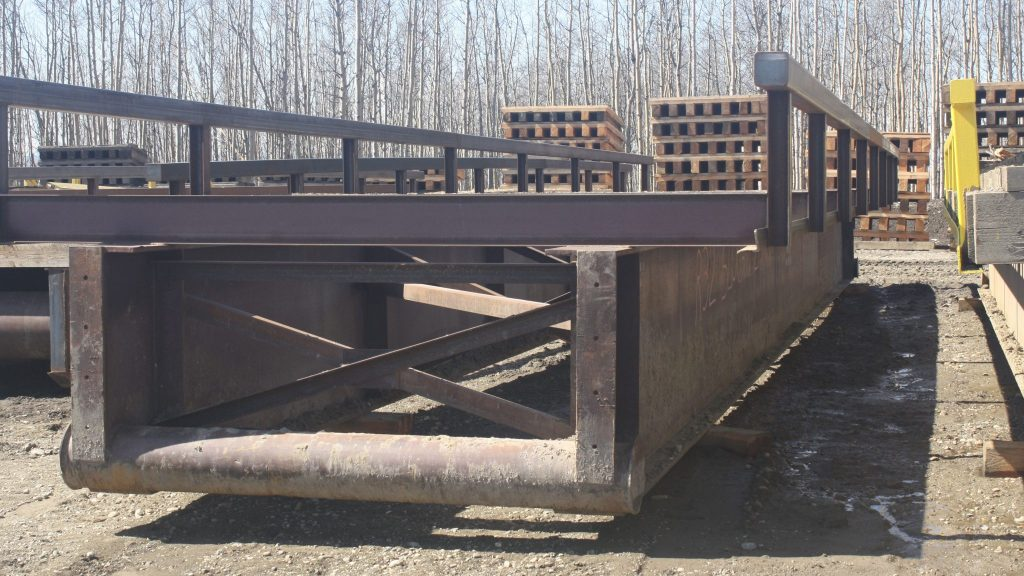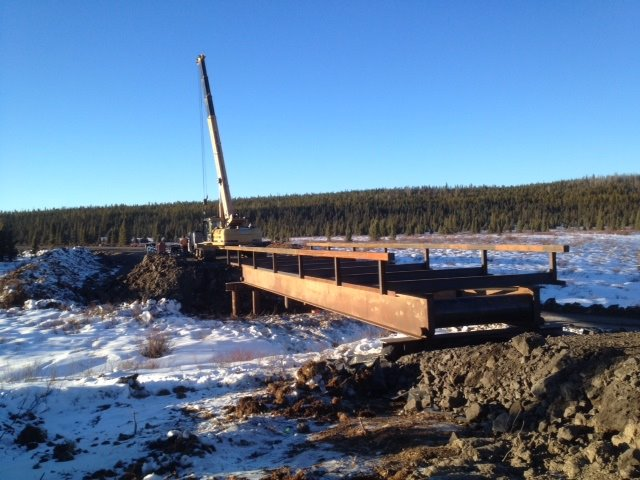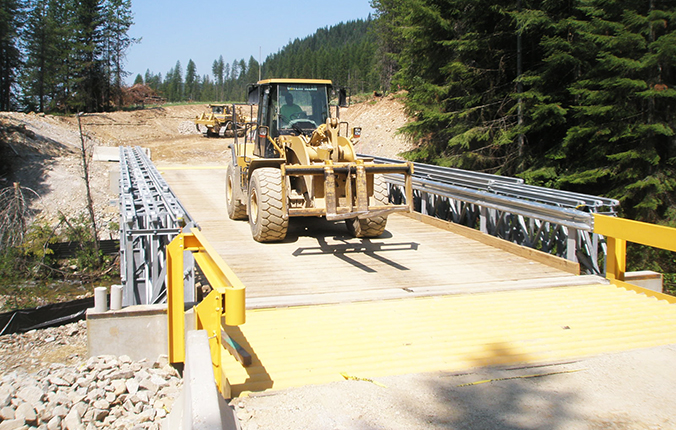Portable bridges are essential structures that provide temporary or permanent solutions for crossing obstacles such as rivers, ravines, or construction sites. Their versatility and adaptability make them invaluable in various engineering applications. This article explores how portable bridges can be customized to meet specific engineering requirements, focusing on design, materials, load capacity, and installation processes.
Understanding Portable Bridges
Definition and Purpose
Portable bridges are prefabricated structures designed for easy transport and quick installation. They are often used in emergency situations, construction projects, and military operations where traditional bridge construction is impractical or time-consuming. Their primary purpose is to provide safe passage over obstacles while minimizing disruption to the surrounding environment. The ability to deploy these bridges rapidly makes them crucial in disaster relief scenarios, where time is of the essence. Additionally, their temporary nature allows for flexibility in planning and execution, enabling engineers to adapt to changing site conditions or project requirements.
Types of Portable Bridges
There are several types of portable bridges, each suited for different applications. Common types include:
Bailey Bridges: Modular steel bridges that can be assembled quickly and are ideal for military and emergency use. Their design allows for easy transport and assembly, making them a popular choice in conflict zones or disaster-stricken areas.
Timber Bridges: Made from wood, these bridges are often used in rural areas and can blend well with natural surroundings. Timber bridges are not only aesthetically pleasing but also environmentally friendly, as they can be constructed from sustainably sourced materials.
Aluminum Bridges: Lightweight and corrosion-resistant, aluminum bridges are suitable for temporary installations and can be customized for various spans. Their lightweight nature allows for easier handling and installation, making them ideal for projects requiring frequent relocation.

Customization Options for Portable Bridges
Design Flexibility
One of the most significant advantages of portable bridges is their design flexibility. Engineers can customize the design based on specific project requirements, including:
Span Length: Portable bridges can be designed to span various distances, accommodating different site conditions. This adaptability is crucial in areas where traditional bridge construction may not be feasible due to geographical constraints.
Width: The width of the bridge can be adjusted to suit the expected traffic load, whether for vehicles, pedestrians, or both. Customizing the width ensures that the bridge can handle the specific types of traffic it will encounter, enhancing safety and functionality.
Load Capacity: Custom designs can enhance the load-bearing capacity, ensuring the bridge can support the intended weight. This is particularly important in applications where heavy machinery or emergency vehicles need to cross.
Material Selection
The choice of materials is crucial in the customization of portable bridges. Different materials offer unique benefits:
Steel: Known for its strength and durability, steel is often used in modular bridge designs. It can withstand heavy loads and harsh weather conditions, making it suitable for a wide range of applications, from military to civilian use.
Timber: Timber bridges provide a natural aesthetic and are often used in environmentally sensitive areas. They can be treated for increased durability, allowing them to withstand the elements while maintaining their visual appeal.
Aluminum: Lightweight and resistant to corrosion, aluminum is ideal for temporary bridges that require frequent relocation. Its properties make it an excellent choice for projects where weight and ease of transport are critical factors.
Safety Features
Safety is paramount in bridge design. Customization can include various safety features, such as:
Guardrails: Adding guardrails enhances safety for vehicles and pedestrians, preventing accidents. Custom guardrail designs can be tailored to the specific needs of the site, ensuring maximum protection.
Non-slip Surfaces: Custom decking materials can be used to create non-slip surfaces, ensuring safe passage in wet or icy conditions. This feature is particularly important in regions prone to adverse weather, where slip hazards can pose significant risks.
Lighting: Incorporating lighting systems can improve visibility at night, enhancing safety for all users. Custom lighting solutions can be designed to meet specific site requirements, ensuring that the bridge remains safe and accessible after dark.
Engineering Considerations
Load Analysis
Before customizing a portable bridge, engineers must conduct a thorough load analysis. This involves assessing the expected traffic loads, including:
Static Loads: The weight of the bridge itself and any permanent fixtures. Understanding static loads is essential for ensuring the structural integrity of the bridge over time.
Dynamic Loads: The forces exerted by moving vehicles and environmental factors such as wind and snow. Engineers must consider these dynamic forces to design bridges that can withstand varying conditions without compromising safety.
Understanding these loads helps engineers design bridges that can safely accommodate the expected usage. Advanced modeling techniques and simulations can be employed to predict how the bridge will perform under different load scenarios, allowing for more precise customization.

Site Assessment
A comprehensive site assessment is essential for determining the best customization options. Factors to consider include:
Soil Conditions: The type of soil can affect the bridge's foundation and stability. Engineers must evaluate soil composition and load-bearing capacity to ensure the bridge is adequately supported.
Environmental Impact: Custom designs should minimize disruption to the surrounding ecosystem. This may involve selecting materials and construction methods that are environmentally friendly and sustainable.
Access and Logistics: The location of the bridge will influence transportation and installation methods. Engineers must consider how the bridge will be delivered to the site and assembled, ensuring that logistics do not hinder the project timeline.
Installation Processes
Quick Assembly Techniques
One of the key benefits of portable bridges is their quick assembly. Custom designs can incorporate features that facilitate rapid installation, such as:
Pre-assembled Components: Using pre-fabricated sections allows for faster on-site assembly. This approach not only saves time but also reduces labor costs and minimizes the risk of errors during construction.
Modular Design: Modular bridges can be easily transported and assembled without the need for heavy machinery. This flexibility is particularly advantageous in remote locations where access to equipment may be limited.
Maintenance Considerations
Custom portable bridges should also consider long-term maintenance. Features that simplify maintenance can include:
Corrosion-resistant Materials: Using materials that resist corrosion can extend the lifespan of the bridge. This is especially important in environments exposed to moisture or chemicals that can accelerate deterioration.
Easy Access for Inspections: Designing bridges with accessible components allows for regular inspections and maintenance. Ensuring that critical areas are easy to reach can help identify potential issues before they become significant problems.
Case Studies of Customized Portable Bridges
Military Applications
In military operations, portable bridges are often customized for rapid deployment in challenging environments. For example, a military unit may require a bridge that can be assembled quickly in a remote location, with specific load capacities to support military vehicles. These bridges must be designed to withstand the rigors of combat and harsh weather conditions, ensuring reliability in critical situations.
Disaster Relief Efforts
During natural disasters, portable bridges can be customized to provide immediate access to affected areas. These bridges may need to span wide gaps created by flooding or landslides, requiring engineers to design them for specific lengths and load capacities. The ability to deploy these structures quickly can be the difference between life and death, allowing emergency responders to reach those in need.
Construction Projects
In construction, portable bridges are often used to facilitate access across job sites. Custom designs may include features such as wider lanes for heavy machinery and reinforced structures to support construction loads. This adaptability ensures that construction projects can proceed smoothly, minimizing delays and enhancing overall efficiency.
Future Trends in Portable Bridge Customization
Advancements in Materials
The future of portable bridge customization may see the introduction of advanced materials, such as composites and smart materials that can adapt to environmental conditions. These materials could enhance the durability and functionality of portable bridges, allowing for lighter structures that maintain strength and resilience.
Integration of Technology
The integration of technology into bridge design and construction processes is another trend. This could include the use of sensors for real-time monitoring of bridge conditions, allowing for proactive maintenance and safety assessments. Smart bridges equipped with IoT technology can provide valuable data on usage patterns and structural health, enabling engineers to make informed decisions about maintenance and upgrades.
Sustainable Practices
As environmental concerns grow, the demand for sustainable practices in bridge construction is increasing. Future portable bridges may focus on using eco-friendly materials and designs that minimize environmental impact. This shift towards sustainability not only benefits the environment but can also enhance the public perception of engineering projects, aligning them with broader societal goals.

Portable bridges are versatile structures that can be customized to meet a wide range of engineering requirements. Through careful consideration of design, materials, safety features, and installation processes, engineers can create bridges that are not only functional but also tailored to specific needs. As technology and materials continue to evolve, the potential for innovative and sustainable portable bridge solutions will only expand, ensuring their relevance in future engineering projects. The ongoing development in this field promises to enhance the capabilities of portable bridges, making them an even more critical component of modern infrastructure solutions.
Frequently Asked Questions regarding Portable Bridges
1. What are the primary applications of portable bridges?
Portable bridges are primarily used in military operations, disaster relief efforts, construction projects, and temporary crossings for pedestrians and vehicles. They provide quick access over obstacles like rivers and ravines, especially in situations where traditional bridge construction is impractical.
2. How can the load capacity of a portable bridge be customized?
The load capacity of a portable bridge can be customized by selecting appropriate materials, adjusting the design to distribute weight effectively, and reinforcing structural components. Engineers conduct load analyses to determine the necessary specifications based on expected traffic and environmental conditions.
3. What materials are commonly used in the construction of portable bridges?
Common materials for portable bridges include steel, timber, and aluminum. Steel offers strength and durability, timber provides a natural aesthetic and environmental compatibility, while aluminum is lightweight and corrosion-resistant, making it ideal for temporary installations.
4. How quickly can portable bridges be assembled and installed?
Portable bridges can often be assembled and installed within a few hours to a couple of days, depending on the design and site conditions. Modular designs and pre-fabricated components facilitate rapid assembly, making them suitable for emergency situations where time is critical.
5. What safety features can be integrated into portable bridges?
Safety features that can be integrated into portable bridges include guardrails, non-slip surfaces, and lighting systems. These features enhance safety for both vehicles and pedestrians, ensuring that the bridge remains secure and accessible under various conditions.






